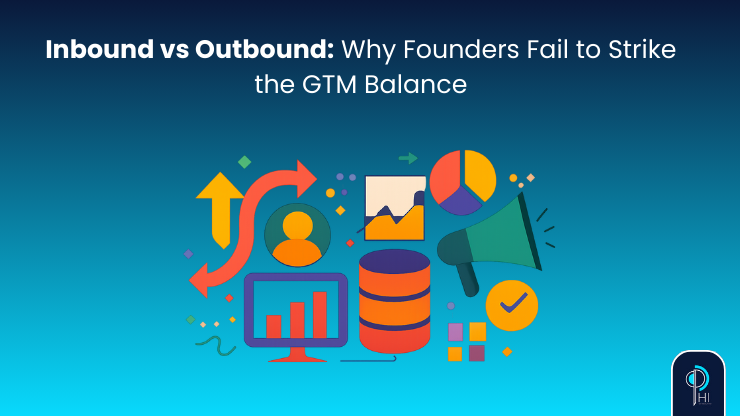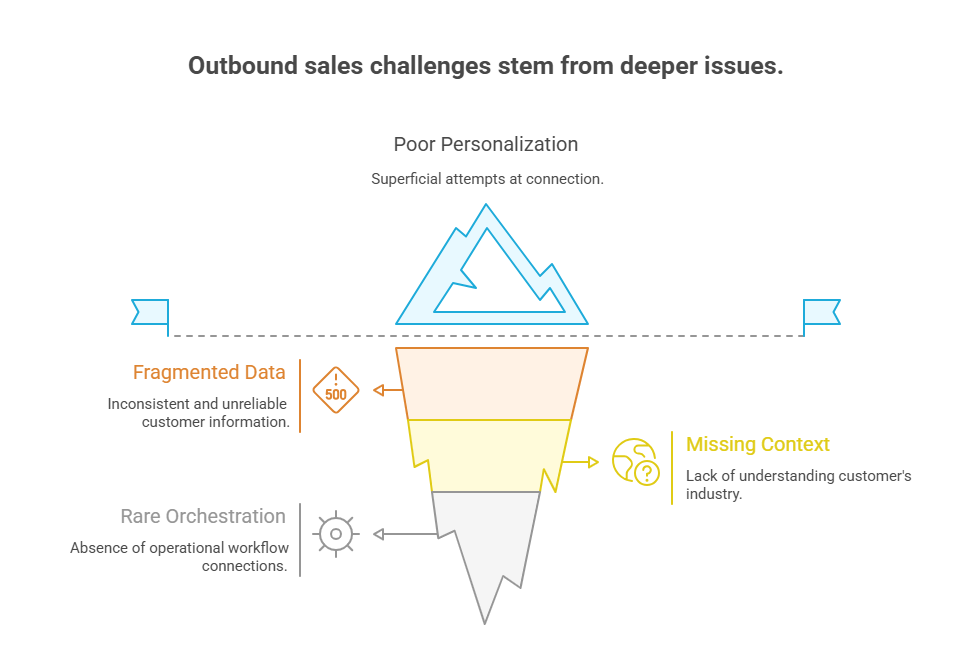Inbound vs Outbound: Why Founders Fail to Strike the GTM Balance
- Sani Zehra
- 18 minutes ago
- 4 min read

Why This Conversation Still Matters
Founders love binaries. Build or buy. Product-led or sales-led. Inbound or outbound.
The truth? GTM never works in binaries - especially not today.
Inbound promises warm leads at scale - until the funnel slows down. Outbound promises pipeline control - until your team burns itself out chasing the wrong accounts. And yet, most founders pick one motion too early, push it too far, and watch the balance collapse just when growth depends on it most.
For context, our post on common GTM execution challenges shows how founders often fall into this trap early. And if you’re still designing your first strategy, the components of B2B GTM framework is a good starting point.
The uncomfortable reality: both inbound and outbound are harder than ever. The winners aren’t the ones who “choose” one side. They’re the ones who learn to balance and connect both into one GTM system.
We outlined this shift in laws of GTM strategy success, where balance - not binaries is the differentiator.
Why Outbound Is Harder Than Ever
Outbound isn’t broken, but it’s brutally difficult to execute well. Here’s why:
Messy, fragmented data: It’s not just about getting phone numbers right. The real problem is whether your CRM tells a coherent story - product usage tied to accounts, clean notes, no duplicates. Without it, SDRs “personalize” from broken data. (We explore this in our piece on RevOps automation for startups).
Missing industry context: The market is saturated with shallow personalization (“Congrats on the funding!”). Prospects can smell generic from a mile away. The best outbound is written by people who live the customer’s problem. (Our write-up on modern outbound sales teams highlights how top startups solve this).
Rare orchestration: Even with clean data + strong context, you need operational glue: RevOps or GTM engineers who connect workflows. Few founders invest early here. Our take on the rise of the GTM engineer explains why this role is becoming indispensable.

That’s why so many outbound sequences look like Example 1:
“Congrats on your Series B. Saw you looked at our pricing page. Worth a quick call?”
Instead of
Example 2:
“Congrats on the $40M raise - saw you’re investing half into distribution. Your product has traction, now you need to fuel pipeline. Took 5 mins to pull every org that had an outage in the US last month. Here’s the list. Two more ideas if you’re open.”
The difference? Signal + context + action.
Inbound’s Hidden Limitations
Founders burned by outbound often run straight into inbound: blogs, SEO, paid ads, community. And it works, but only for a while.
Inbound’s traps:
Linear scaling, then plateau Ten blogs might get traction. A hundred won’t necessarily 10x volume. (See GTM channels to grow your startup).
Paid ads kill CAC if you don’t back them with downstream sales engines.
Community-driven inbound takes years, time most startups don’t have.
Inbound captures intent, but doesn’t create it. Outbound creates demand; inbound waits for it.
That’s why founders relying only on inbound wake up with “stalled pipeline syndrome.” Demand dries up, content isn’t compounding, and no second motion exists.
The Real GTM Balance: Orchestrating Inbound + Outbound
The fix? Stop thinking channel vs channel. Start thinking system orchestration.
Outbound informed by inbound signals: Every signal (downloads, webinar signups, blog clicks) should fuel outbound. If Tom downloads your eBook, don’t just nurture him - call him with context. This aligns with our GTM audit framework, which helps identify where signals are wasted.
Inbound fueled by outbound insights: Outbound calls surface objections, competitors, and use cases. That’s your content calendar. We’ve seen fintech founders turn objection-handling into SEO winners, cutting CAC by ~25%.
Shared data foundation: Your CRM and marketing automation need to tie inbound + outbound. Without this, both motions fail. We outlined this in the hidden role of RevOps.
Founders: Stop Treating GTM as a Channel War
Here’s the mistake: treating GTM like a channel choice instead of a system design problem.
Outbound isn’t failing because “cold email is dead.” It’s failing because you never invested in RevOps.
Inbound isn’t stalling because “content doesn’t work.” It’s stalling because outbound insights never fed into the loop.

Stage-by-stage balance:
Seed → Outbound drives pipeline, inbound seeds trust.
Series A → Outbound gives control, inbound lowers CAC.
Series B → Motions must be tightly orchestrated, or scale collapses.
We broke this down in detail in our GTM maturity curve.
What Great GTM Balance Looks Like
A quick checklist:
Signals: Are inbound signals fueling outbound?
Context: Do outbound messages show deep account knowledge?
Ops: Do you have GTM operators tying data together?
Loop: Are outbound insights shaping inbound campaigns?
If not, you’re not balanced yet.
The Founder’s To-Do List
If you’re a founder, here’s where to start:
Invest in ops talent. This is the rare hire that unlocks scale.
Go deeper on data. Layer in 1st-party usage, customer stories, not just funding news.
Kill binary thinking. It’s orchestration, not channels.
Audit your message. If your outbound looks like Example 1, you’re commoditized.
For inspiration, see how we scaled Datatruck from $2M to $16M ARR by connecting inbound + outbound into one loop.
Closing Thought: GTM Is Balance, Not Bullets
There is no silver bullet. Outbound will never be “easy.” Inbound will never “scale forever.”
The winners in 2025 and beyond? The ones who embrace balance - orchestrating signals, data, and insights into one GTM system that compounds over time.
If your inbound is stalling, it’s because outbound isn’t feeding it. If your outbound is failing, it’s because inbound isn’t supporting it.
At Phi, we design GTM systems that fix this trap. Explore why many startups now see hiring a GTM execution partner as the missing piece to sustainable scale.
Stop guessing. Start balancing.




Comments